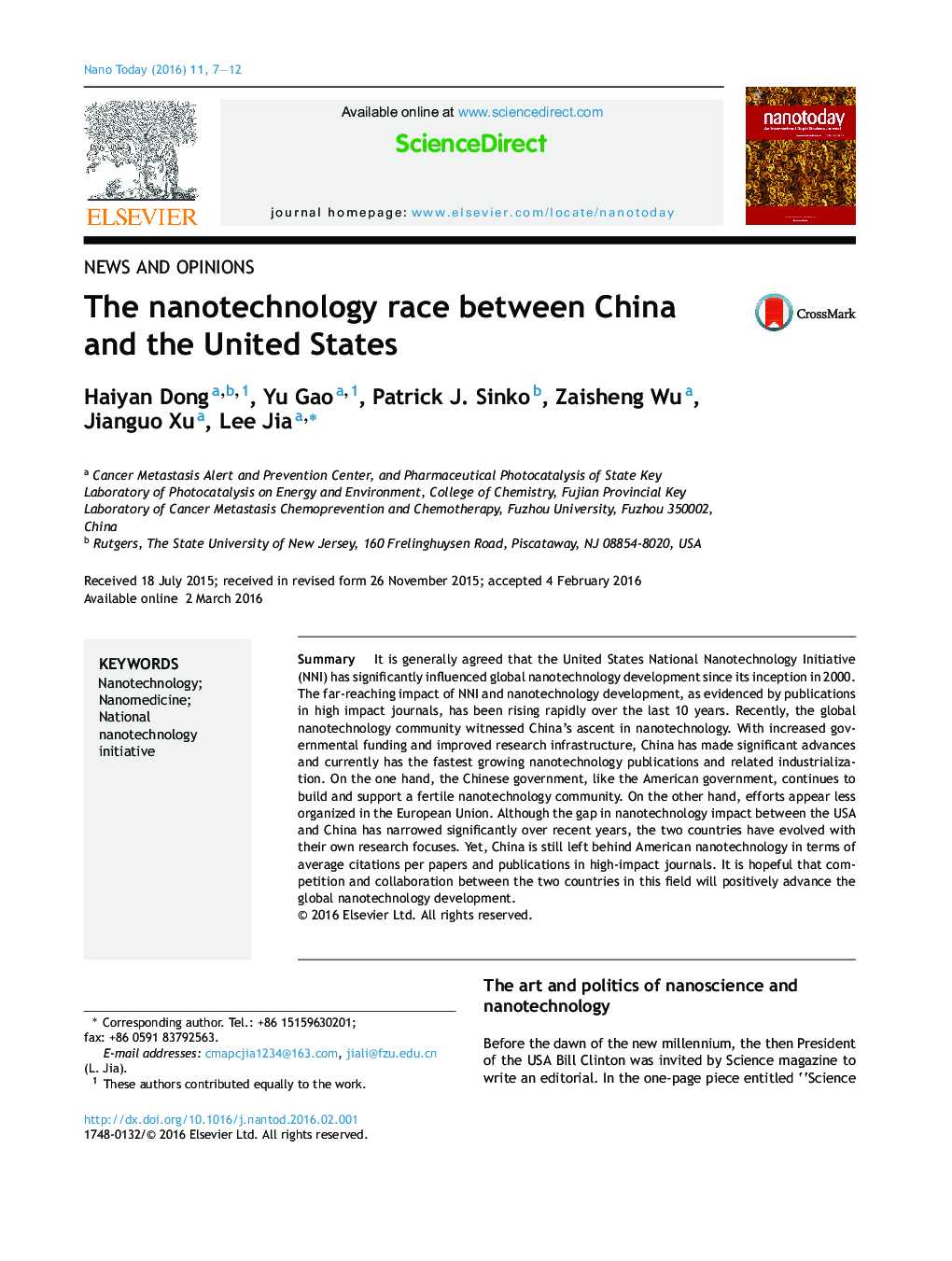| کد مقاله | کد نشریه | سال انتشار | مقاله انگلیسی | نسخه تمام متن |
|---|---|---|---|---|
| 32030 | 44891 | 2016 | 6 صفحه PDF | دانلود رایگان |
• The China–USA relationship in terms of nanotechnology is as compelling as it is complex.
• The two nanotechnology giants are front-runners, competitors and collaborators in the field.
• The competition and collaboration spark innovation and produce lots of nanotechnology products.
SummaryIt is generally agreed that the United States National Nanotechnology Initiative (NNI) has significantly influenced global nanotechnology development since its inception in 2000. The far-reaching impact of NNI and nanotechnology development, as evidenced by publications in high impact journals, has been rising rapidly over the last 10 years. Recently, the global nanotechnology community witnessed China's ascent in nanotechnology. With increased governmental funding and improved research infrastructure, China has made significant advances and currently has the fastest growing nanotechnology publications and related industrialization. On the one hand, the Chinese government, like the American government, continues to build and support a fertile nanotechnology community. On the other hand, efforts appear less organized in the European Union. Although the gap in nanotechnology impact between the USA and China has narrowed significantly over recent years, the two countries have evolved with their own research focuses. Yet, China is still left behind American nanotechnology in terms of average citations per papers and publications in high-impact journals. It is hopeful that competition and collaboration between the two countries in this field will positively advance the global nanotechnology development.
The National Institutes of Health, USA (upper left) and the National Center for Nanoscience and Technology, China (upper right) are the heart of the country's nanotechnology and nanoscience.Figure optionsDownload high-quality image (165 K)Download as PowerPoint slide
Journal: - Volume 11, Issue 1, February 2016, Pages 7–12
